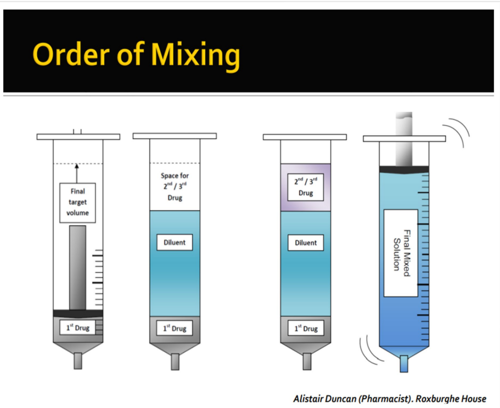Bodyguard T syringe pump (or equivalent)
- Luer lock syringe
- Extension line (with integrated anti-syphon valve)
- Needleless connection system
- Good quality 9 volt (6LR61) alkaline battery
- Transparent adhesive dressing
- Smaller syringes and needles to prepare the medicine(s)
- Sharps bin
- Personal Protective Equipment (as required)
The size of syringe selected to prepare the medicine(s) will depend on the volume of the medicines prescribed including diluent. The total volume generated will determine the size of the syringe.
The volumes below provide an average maximum volume.
- 20ml – maximum volume 17mls
- 30ml – maximum volume 22mls
- 50ml – maximum volume 34mls (*risk assess prior to use)
*Please note a 50ml syringe cannot be accommodated by the majority of lockboxes.
Lockbox / Cover
The Bodyguard T syringe pump may be set up with either a lockbox or non-locking cover. Please refer to local policy and procedures.
Battery
BD recommend only using 9V 6LR61 non-rechargeable batteries. Before using the pump, the following actions should be taken.
- Always check the battery power before commencing an infusion
- Press the
 key until the battery level option appears on the screen and then press
key until the battery level option appears on the screen and then press  to confirm
to confirm - The average battery life, when commenced at 100%, is approximately 2-3 days but varies depending on use
- In the community setting, if the battery power has less than 50% life remaining at the start of an infusion, then a new battery should be installed
- Report any problems with battery connections to your local Medical Physics department.
BD recommends leaving the battery in the Bodyguard T pump however please check local policy and procedures. If the battery has been removed from the syringe pump, please check the date and time are accurate on set up. Guidance on resetting the time & date: see in the appendices
Key Point: The battery level can reduce significantly when alarm conditions are activated during the infusion.
Key Point: The low battery alarm provides warning at least 30 minutes before the battery ends. If the battery is not replaced, a backup buzzer will sound for 3 minutes and the pump will then shut down.
Key Point: Please consider the environment where the syringe pump is being managed and how the nursing team can respond to the need for a battery change. For example, community settings should confirm the battery level is sufficient to complete the delivery of the full infusion.


